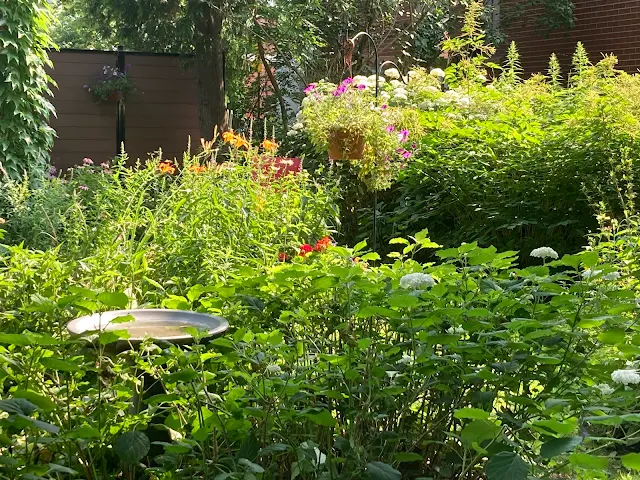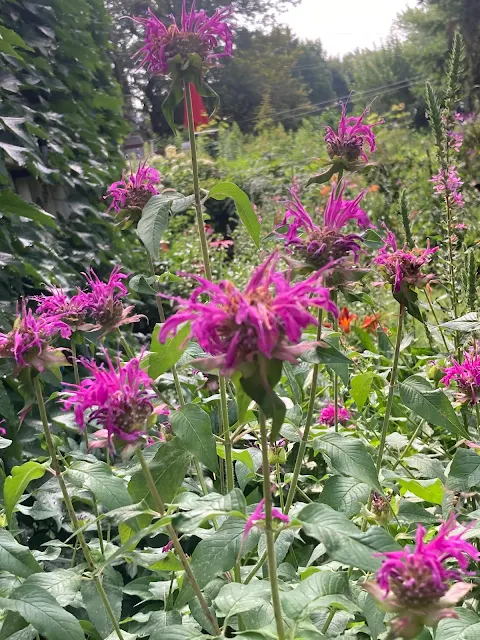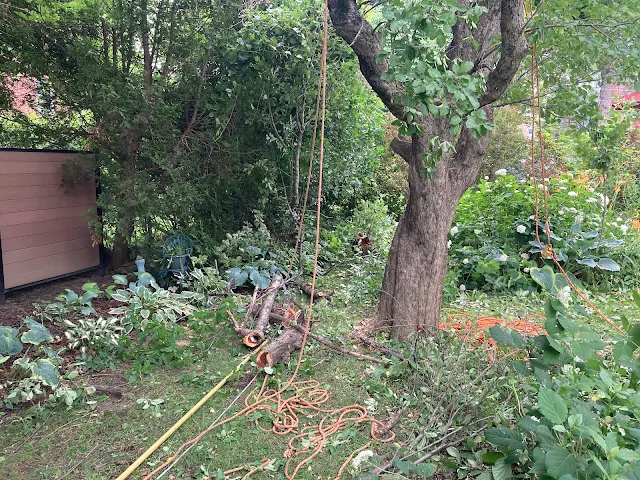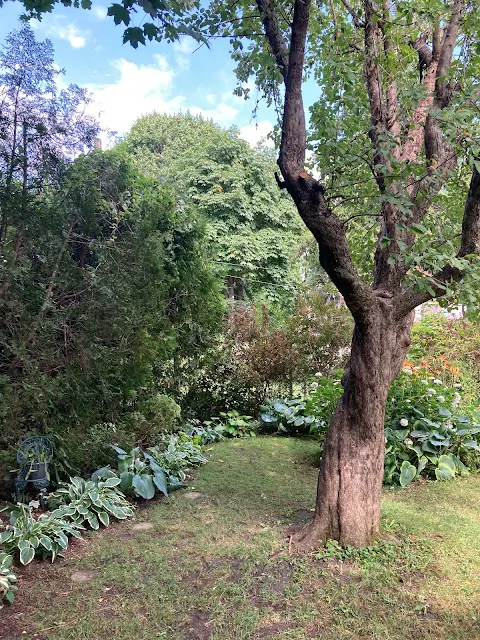Saturday, July 26, 2025
Tuesday, July 22, 2025
Elizabeth Mary Eagle Skinner, who was she?
It is only within the last few years that I discovered the identity of RR Skinner’s mother, of whom he spoke only with affection. The Skinner family is represented on the Find a Grave website and without this resource I would not have found Mrs. Skinner, who was a well-known spiritualist in Bethnal Green in London in the 1920s. Spiritualism was very popular in the 19th Century, it affirmed that communicating with the dead was possible, and, for instance, Sir Arthur Conan Doyle, among others, were spiritualists. "The Mother", as Elizabeth Mary Eagle Skinner was referred to, had a North American indigenous spirit guide, that is, the "person" whose messages were communicated by her was a native American; however, she was not the only medium with a North American native guide, there are others. We have an Indigenous People's television network here in Canada and one of their programmes is Spirit Talker which features a medium, a First Nations' spiritualist, who sits with other natives, average people, and communicates what their deceased relatives want to say to them; some of these episodes are highly moving; I expect that this was the type of thing done by Elizabeth Mary Eagle Skinner, it is to "deliver a message of hope, healing, and closure."
I suspect that Mrs. Skinner may have borrowed from several occult traditions, including the Rosicrucians and the Theosophists. She doesn't seem to have written any books or articles on this subject, subsequently there is little evidence for what she said or did in life. RR Skinner was both her son and pupil in the art or practise of psychic reading. Here is something of what we know:
Elizabeth Mary Ann Eagle Skinner
 |
| Mrs Elizabeth Mary Eagle Skinner of The Universal Brotherhood, the Mystical Church of the Comforter |
Mrs Elizabeth Mary Eagle Skinner of The Universal Brotherhood, the Mystical Church of the Comforter with headquarters in a church (a disused waiting room ) at Denmark Hill Station; “The leader and founder of the church was Mrs. Elizabeth Skinner, whose official title was The Messenger…” (1 January 1927)
Excerpt for Wikipedia entry on the location of Mrs. Skinner’s church at the Denmark Hill railway station:
The station was built between 1864 and 1866. Its design by Charles Henry Driver is in the Italianate style, with an extremely decorative frontage and French pavilion roofs.[4]
... In 1920 the waiting room was used by The Mystical Church of the Comforter, founded by Elizabeth Mary Eagle Skinner, who was known as "The Messenger". The waiting room was transformed by an altar, painted white and surrounded by the seven colours of the rainbow.[5] The Nottingham Evening Post for 17 June 1926 reported that babies were baptised, funeral services were read and even a marriage was solemnised. The porters and clerks of the railway company often worked to the accompaniment of hymns sung by the congregation. The church is believed to have ceased to function after the death of Skinner in November 1929. . . By the late 1970s, the structure had fallen into disrepair...
-o-
1920 saw the station’s waiting room commence use by The Mystical Church of the Comforter, founded by Elizabeth Mary Eagle Skinner who was affectionately known as ‘The Messenger’. This arrangement lasted until Skinner’s death in November 1929.
--https://blog.lessavine.co.uk/denmark-hill-station-dmk/
-o-
The following is from https://loughborough-junction.org/2016/12/01/the-mystical-church-of-the-comforter-in-denmark-hill-railway-station/
Mrs Skinner passed away on November 24, 1929 and this report from the Lancashire Evening Post, 27 November 1929, describes the scene. She is buried in Camberwell Old Cemetery.
The Mystical Church of the Comforter … in Denmark Hill Railway Station
A disused waiting room in Denmark Hill Railway Station hosted the Mystical Church of the Comforter. It’s founder was Elizabeth Mary Ann Eagle Skinner nee Roberts. She was born August 30-31, 1875 in Bethnal Green. She married Arthur John Skinner, who was a teacher at Alleyn’s Dulwich.
She founded the Church in 1901 and it moved into the disused waiting room next to the ticket office at Denmark Hill around 1920.
The church in the station: http://jot101.com/2019/10/the-church-in-the-station/
If you were catching a train to or from Denmark Hill railway station in Camberwell, London, any time between 1920 and 1929 you might be surprised to find that one of the waiting rooms there had been converted to a place of worship. But not any place of worship. Around 1920 a disused waiting room on the first floor was let to one Mary Elizabeth Eagle Skinner for use as a temple dedicated to her Mystical Church of the Comforter, a religious foundation, which she claimed had ancient foundations, but which she had re-established in 1901.
Little is known about Mary Skinner (1875 – 1929) apart from the fact that she was a Rosicrucian of the Ymir Temple, was married to a schoolteacher, called herself ‘The Messenger', but was popularly known as 'mother'. Her full-page advert in the April 1926 issue of The Occult Review which we found at Jot HQ recently, tells us a little more about the teachings of her Church, which were no doubt laid down by herself, she being to all intents and purposes a one-woman band.
One curious newspaper reporter in 1926 described the Temple thus:
One end of the room had been transformed into an altar, painted white and surrounded by the seven colours of the rainbow. Seven steps lead up to the altar, and at the side are two pillars representing Beauty and Strength. Everything is done by symbols, and the badge worn by members is a dove standing in the circle with a seven-leaved branch in its beak.
Skinner was not the first religious figure to proclaim the importance of ‘Universal Brotherhood’, but unlike most established religions around the world, she supported the idea that men and women are equally qualified to act as ministers. The chief teachings had aspects in common with orthodox Christianity, although the emphasis was much more on the unity of all ‘men, of all creeds, seeing the one Eternal LIGHT of LOVE shining through all ‘. There is also an emphasis on the importance of personal moral responsibility:
‘Thou art thy own judge; thy conscience tells thee. There is no such thing as a bad conscience : it is thy good conscience that reproves thee. Thy conscience is the EYE of the soul. It is the Angle with the Flaming Sword !
Such teachings recall those of the Ba’hai movement, which was founded in the 1840s, and which claims to be the youngest major religion in the world. Skinner may have been influenced by the teachings of the Ba’hai leader, who toured England in the early years of the twentieth century.
Services at the Mystical Church were held on Sunday, Wednesday and Thursday evenings (presumably when the station was less busy). Healing took place on Saturday evenings and ‘deeper‘ sessions were available to enrolled members only on Monday and Friday evenings.
It would be interesting to know what sort of people attended Skinner’s services, but whoever they were, most seem to have flocked to the Temple to see her body laid out following her death in November 1929 at the early age of 54. Indeed there was such a crush in the passage outside the former waiting room, that there were fears for the safety of all concerned. One admirer of ‘mother‘ Skinner summed up the feelings of all who knew her:
‘She was a great and loving soul, a prophetess and a seer…’
--R.M.Healey
One end of the room has been transformed by an altar, painted white and surrounded by the seven colours of the rainbow. Seven steps lead up to the altar, and at the side are two pillars representing beauty and strength. Everything is done by symbols, and the badge worn by the members is a dove, standing in a circle with a seven-leafed branch in its beak.
--A description from the Lincolnshire Echo, 21 August 1926
“The leader and founder of the church is Mrs Elizabeth Mary Eagle Skinner. Her official title is “The Messenger” but most of the members call her Mother. When conducting a service, Mrs Skinner wears white robes ornamented with mystical signs. She is a Rosicrucian and the signs used refer to some of the inner orders of that society.”
-o-
The church was mentioned in an advertisement published in a periodical “Review, THE PROBLEM OF ATLANTIS”; note: this periodical seems to have published only advertisements.Messenger (YMIR TEMPLE) Elizabeth Mary Eagle Skinner. 'Phone Brixton 2426. A BOOK OF GREAT INTEREST. The Problem of Atlantis. By LEWIS SPENCE. Demy 8vo, cloth Source: http://www.iapsop.com › materials › occult_review
-o-
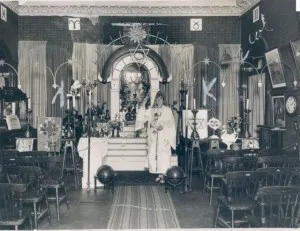 |
| Mrs. Skinner at the altar of her temple |
 |
| The symbolism of Mendelssohn's Wedding March played at a funeral... now wed to eternity. |
 |
| Statement by Elizabeth Mary Eagle Skinner |
 |
| Newspaper report of Elizabeth Mary Eagle Skinner funeral |
https://harveymorris.uk/2020/10/29/covid-nights-a-storm-over-haunted-camberwell/
Monday, July 21, 2025
Friday, July 18, 2025
Meetings with RR Skinner
 |
| Photo of RR Skinner provided by Patricia Proenza in 1988 |
Hark, hark! the dogs do bark,
Beggars are coming to town.
Some in rags, some in jags,
And some in velvet gowns.-- Quoted by RR Skinner
What follows (in the following posts) are the events and narrative of meeting RR Skinner; our first meeting was in 1974, the last meeting was in 1986. This is taken from notes I made after these meetings; they were marathon sessions of talking with (mostly listening to) Reg, including what he told me about himself, his life, his family, and his observations on life. When I told Reg in 1985 that I would like to write about him he gave me a thick manila envelope containing copies of his various essays written over a thirty year period, I returned these papers to him later. The manuscript that I wrote became "Meetings with RR", it’s 125 pages of double-spaced text; it is unpublished and probably will never be published.
RR Skinner was born on 03 July 1909; he died at Bognor Regis on 31 December 1999 (these dates may not be accurate). From age eight to eleven he did not attend school because of frail health, he had a tubercular bowel and spent these three years in hospital or convalescing at home; this was a time of relative isolation and solitude. After returning to school he found that he couldn't pronounce certain words because of a stammer, but he overcame this through an effort of will. He was the seventh of fifteen children, plus two adopted children. Reg's mother, who ran and ministered her own spiritualist church in Bethnal Green, London, believed that her son would be the next world-teacher and she raised him for that position (this sounds terribly inflated today but it was also the aim of the Theosophical Society to find the next messiah or world teacher, a Buddha, and the person they eventually found was Jiddu Krishnamurti who eventually renounced this idea). In a letter to a friend RR's mother said that the child she was carrying, the future RR Skinner, would be the next messiah. RR told me that his ability to vet people was part of his training at his mother's church, it was his training to be a psychic and spiritual teacher. Many years ago I attended a few spiritualist meetings, these aren't seances but church services, sometimes these services were held at rented spaces in office buildings, and once at the Unitarian Church of the Messiah or, at other times, the Spiritual Science Fellowship, both located in Montreal; there is usually a non-denominational religious service, including hymns, followed by the medium addressing the congregation and communicating messages allegedly from the departed to their family members. I believe RR's mother, Elizabeth Mary Eagle Skinner, was the main influence of his life.
Monday, July 14, 2025
After Attending Krishnamurti's Talks in July 1974
In the fall of 1973
I had no real plans for my future after I graduated from university in 1973; with no plans and no ambition it was a fairly aimless time that followed. But I did have two interests, one was writing poetry, the other were the writings of the Indian teacher J. Krishnamurti who had once been a famous speaker, a famous guru, but by 1973 his fame had somewhat faded. It was only by chance that I came across Krishnamurti’s writings, there is a chapter on Krishnamurti in Henry Miller’s The Books in My Life, and this is possibly where I first heard of Krishnamurti. I also remember hearing and visiting Swami Shyam who was popular in Montreal in the early 1970s, I was one of many who received a mantra from him. I was one of the young seekers, just a face in a crowd, who visited Geof Stirling’s house where Swami Shyam was staying. But I was never a follower, never a believer, never a joiner of groups or organizations, I never have been and I’m still not. I think what Krishnamurti was to me was therapy, not really learning about spiritual ideals but learning about myself. After I received a mantra from Swami Shyam I sat every night for about three months repeating it but by early 1973 I was wary of mantras, swamis, and meditation; but it wasn't just Krishnamurti who dissuaded me from following a guru, it was my own innate disbelief in gurus and the people who followed them. Krishnamurti didn't want you be a follower or believe in anything, he wanted people to think for themselves. The months of late 1973 and early 1974, after graduating from university, dragged on and in the spring of 1974 I decided to go to Saanen, Switzerland, to attend Krishnamurti’s public talks given there every year; at the time I still didn't know anybody who was interested in Krishnamurti's teachings or in Krishnamurti. One of my professors had become a Tibetan Buddhist and published a book length poem on Milarepa, I think his complaint was that Krishnamurti was too intellectual for him, too lacking ritual, but this is what I always liked about Krishnamurti, that he was not a part of the guru industry being exported to the West by India and Tibet. So, in early July 1974, I flew from Montreal to Zurich and from there I took a train to Sannen which is about two miles from Gstaad, a holiday resort for wealthy people. I think it was my first day there that I met Patrick McCarty, who was from California, and Sally Lake, from England. The three of us, Pat, Sally, and myself, became friends and between attending Krishnamurti’s Talks we travelled a bit, for instance to Lake Maggiore; at the end of the Talks we decided that we would meet again in the UK; perhaps it was only a week or ten days later when we met at Sally’s mother’s home in Crowborough and we planned to meet Sally's uncle, Reg Skinner, of whom Sally often spoke; Reg was also interested in Krishnamurti, and he seemed to be someone worth meeting.
 |
| This is Reg Skinner's home, Boisville, located at 7 Sandhurst lane, Blackwater, Camberley. Photo from Google Street View |
Meeting RR
It was in mid-August 1974 that I met Reg (Reginald Rice) Skinner, or RR, at his home in Blackwater, near Camberley. Reg had retired the previous year, he had worked as a chiropodist (not, as he told me, affiliated with the NHS) with his surgery at his home and he was about 66 years old. Joan, Reg’s common law wife, had died of cancer in 1972 and he recounted to me his married life with her. Reg's home, Boisville, was named by the contractors who built it about forty years before and it had been given to Reg and Joan by their friend and the previous owner of the house, Mrs. Scott, with whom Reg and Joan lived, and who was affectionately named Mu; Mu had worked for the post office and now, in her mid-eighties, she lived in a residence, near Tekels Park, in Camberley. It occurs to me only now that Joan must have been the sister of Sally’s father who had died when Sally was young, she referred to RR as Uncle Reg. Boisville is pronounced “boy’s ville” and not “bois ville” with a French pronunciation; the “boys” having been the contractors who built that particular house. It was a white stucco building with a small garage beside it that was used as a workshop. There were a few topics that preoccupied RR, among them was his brother, Welby Skinner, his mother who had also been a spiritual teacher, Krishnamurti, Joan, beekeeping, and his own life experiences; but what interested him the most were “things appertaining”, his term for understanding life in its complexity and depth. Everything eventually devolved to “things appertaining”. I was to hear a lot about these topics from Reg.
.jpg) |
| Stephen Morrissey (right) with Reg Skinner in the garden at Boisville, Camberley, 26 August 1974 |
 |
| Reg Skinner |
Sunday, July 13, 2025
Saturday, July 12, 2025
Tree trimming time
Yesterday, the old apple tree that shaded our garden was trimmed; it had darkened most of the garden, especially this summer. The time had come, the time to let in the light!










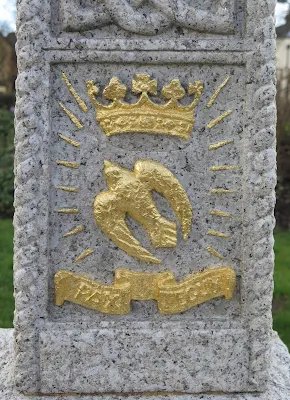








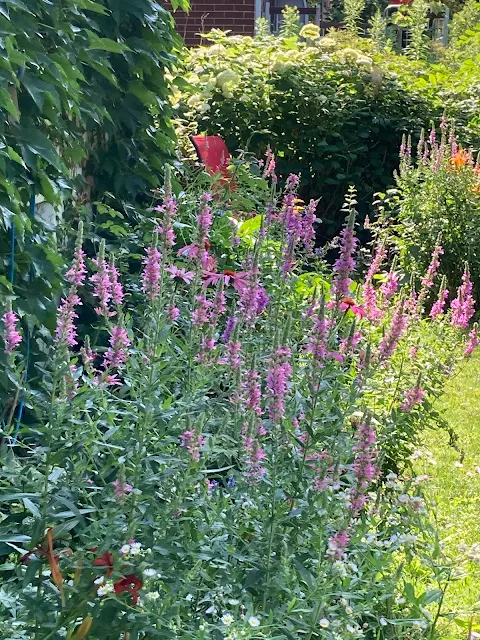


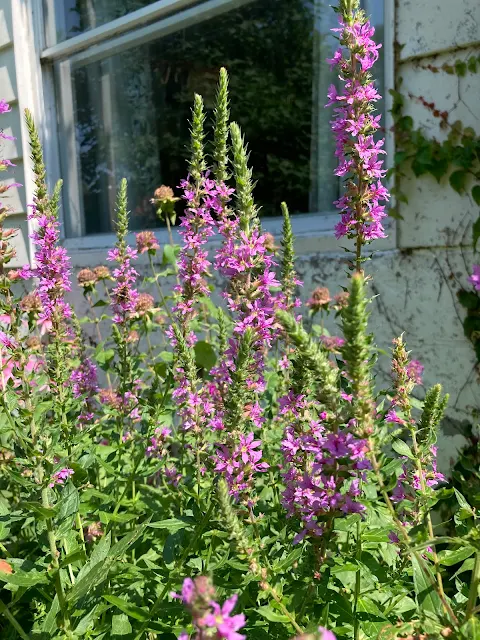



.jpg)


